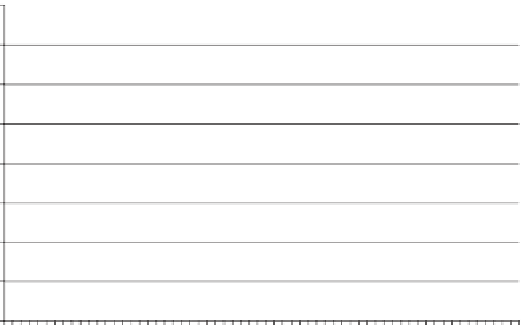Agriculture Reference
In-Depth Information
reduced automatically in an effort to curtail body heat
production. Respiratory rate increases about 5-fold
when temperatures rise from 10 - 40 ° C (50 - 105 ° F) (Bath
et al., 1985). Chloride content of milk increases and lactose
decreases with high environmental temperatures.
cessation of lactation, indicating the importance of proper
hormonal balance for the maintenance of milk secretion.
Goats with inhibited lactation from experimental hypophy-
sectomy restored lactation to pretreatment levels by admin-
istration of growth hormones, insulin, prolactin, thyroxin,
and glucocorticoids (Cowie et al., 1964).
Globally, the length of normal goat lactations depends
on breeds and environmental conditions, and can vary
between 200 and 300 days. The rate of lactation decline is
infl uenced by season of kidding, averaging about 86%, but
without new pregnancy, there may not be much of a
decline and the lactation curve can persist for more than 1
or 2 years.
The lactation curves of different dairy goat breeds in the
U.S. are shown in Figure 14.2, where all breeds tend to
have similar trends of milk production throughout the
lactation period. Goats with high lactation records reach
higher peaks in production than goats with low lactation
records. First, lactations may have high persistency of
lactation.
LACTATION LENGTH AND
LACTATION CURVE
Dairy goats in the Northern Hemisphere usually start lacta-
tion after kidding in spring and get rebred for a new preg-
nancy in the fall (autumn), unless the farmer/owner wants
to have milk in winter, avoid the winter dry period, and
continue milking beyond 10 months of lactation without
rebreeding in the fall. It is not unusual for some dairy goats
to lactate for 2 years without much decline until the next
pregnancy. Young dairy goats (doelings) can also be
induced to secrete normal milk without pregnancy and
kidding, after some massage stimulation of the young
udder for several days. Male goats (bucks) can likewise be
stimulated to secrete normal milk, which is of great advan-
tage for the determination of genetic polymorphisms of
milk proteins in both sexes for pedigree analysis and sire
selection (Gall, 1981).
Length and yield of lactation may be affected by many
factors including adequate feeding, maintenance of health,
regular milking, proper management of the milking herd,
and onset of pregnancy, besides genetics. The removal of
the pituitary gland results in the immediate and complete
MILK COMPOSITION
General Compositional Characteristics of Goat Milk
Proximate composition of goat milk is similar to that of
cow milk, although goat milk may contain more fat,
protein, and minerals, and less lactose and casein than cow
milk (Table 14.3). Several reports (Park, 2005) have given
4
3.5
3
Alpine
LaMancha
Nubian
Oberhasli
Saanen
Toggenburg
2.5
2
1.5
1
0.5
0
Days in Milk
Figure 14.2
Patterns of lactation curves for different dairy goat breeds in the U.S. (Dairy Herd
Improvement Registry; ADGA, 2008). For color detail, see Appendix A.





























































































































